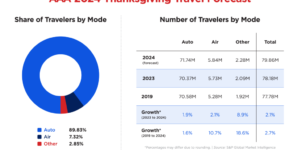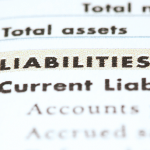Everybody knows about climate change and catastrophes, the Internet of Things and the cloud, the on-demand economy and online shopping, autonomous vehicles and robots in the workplace, terrorism and pandemics, 3-D printing and cyber theft, and political instability and economic uncertainty. Insurance professionals have been talking about these and many other emerging risks for years.
But what’s lurking in the shadows? What insurance and organizational risks of the immediate or distant future are being overlooked? What are the risks facing insurance carrier executives and organizations and underwriters that are flying under the radar? Carrier Management offers 67 risks nobody is talking about (in no particular order). It’s a drop in the bucket for sure, but perhaps enough to spark some new conversations and bring some risks out of the shadows.
Such an odd number—67 risks. Why not 75 or 100?
Sixty-seven was the number of risks that we had room to publish here. But we know there are more.
What underappreciated risks are on your radar screen? We invite you to share your ideas by contacting our editors for a reader-written supplement to our article.
Submit your ideas for Susanne Sclafane at ssclafane@carriermanagement.com or Andrew Simpson at asimpson@wellsmedia.com.
- Innovation follows manufacturing. The idea that innovation happens in one place—Silicon Valley—while manufacturing happens in another—China—is unsustainable. If all the manufacturing is happening in China, a lot of the innovation will happen there, too. (“Making Innovation,” MIT Technology Review, Sept. 16, 2014 by Nanette Byrnes)
- Narcissistic executives.Narcissistic CEOs are more likely to engage in risky business practices. (“Talent Risk: A Killer Torpedo,” Carrier Management, Dec. 31, 2013; “CEO Narcissism, Accounting Quality, and External Audit Fees,” May 11, 2015 by J. Scott Judd, University of Arizona; Kari Joseph Olsen, Utah State University; James Stekelberg, University of Arizona)
- Digital disengagement. More and more people opt out of social networking and the digital world, refusing to share data. (“Swiss Re SONAR: New emerging risk insights,” page 15)
- Predictive model backlash. As insurers use more predictive models, more people allege discrimination. One social media complaint spreads instantaneously.
- Peer-to-peer insurance. Friendsurance: The P2P Insurance Concept. (www.friendsurance.com/) Isn’t this how insurance got started? Could it be the next Uber?
- Carfax for insurance. Rating of insurance companies based on their record for paying claims.(www.InjuredMoney.com)
- Extreme consolidation. Larger carriers utilize their superior data and analytics capabilities to wipe out smaller ones.
- Obesity as a disability. With obesity classified as a disability, expect reasonable accommodation, disability discrimination and harassment claims.
- Autism liability. Environmental contaminants could be responsible for a large number of autism cases. (“Possible Environmental Cause of Autism Discovered,” GenRe blog item posted Oct. 30, 2013 by Charlie Kingdollar)
- Super materials.Graphene could eventually replace steel and can be used to turn on lightbulbs. What about electric cars? Shrilk, made from leftover shrimp shells, is useful for sutures or growing new tissue. Lotus leaves are used to make waterproof paints and textiles. (“Extreme Graphene and the Coming Super Materials Gold Rush,” www.futuristspeaker.com, Oct. 27, 2014 by Tom Frey; “The Super Supercapacitor,” directed by Brian Golden Davis on Vimeo; “Hold on. My Phone Says I’m Having a Heart Attack: Top Tech Trends Revealed,” Carrier Management, Nov. 19, 2014)
- More super materials. An ultra-thin invisibility cloak made of microscopic rectangular gold blocks can render objects undetectable with visible light. The technology eventually could be used for military applications—disappearing vehicles, aircraft, soldiers. What about civilian life?(“Now you see it, now you don’t: invisibility cloak nears,” Reuters, Sept. 17, 2015 by Will Dunham)
 Cell tower worker safety.Communications tower climbing has a death rate roughly 10 times that of construction. (“In Race For Better Cell Service, Men Who Climb Towers Pay With Their Lives,” ProPublica, May 22, 2012 by Ryan Knutson, PBS Frontline, and Liz Day, ProPublica)
Cell tower worker safety.Communications tower climbing has a death rate roughly 10 times that of construction. (“In Race For Better Cell Service, Men Who Climb Towers Pay With Their Lives,” ProPublica, May 22, 2012 by Ryan Knutson, PBS Frontline, and Liz Day, ProPublica)- Habit-forming technologies. Technologies aimed at forging new habits have been used by casinos and cigarette makers for years. Today, the business model is open to a broad range of companies. (“Technology and Persuasion,” MIT Technology Review, March 23, 2015 by Nanette Byrnes)
- Sophisticated fraud.Today’s controls will not detect tomorrow’s fraud. Insurers lack red flags for new types of schemes. (“White paper: Emerging issues,” Coalition of Insurance Fraud at www.insurancefraud.org)
- Multitasking employees. Less-focused employees are less productive. (“The high cost of multitasking that you weren’t aware of,” Tumotech, March 16, 2014 by Chuck Tesla)
- Activist investors. They use sophisticated methods to target companies, even high-performing ones. (“Taking the Full View: the Four “P’s” of Pay for Performance and Why They Matter to Investors,” C-Suite Insight, Issue 15 2014 published by Equilar; “It’s Not Your Imagination, Activism Has Grown,” Bloomberg BNA, Aug. 31, 2015)
- Graying corporate directors.The average age of directors of companies in the S&P 1500 index is 64. (“Age and Tenure in the Boardroom,” published by Equilar)
- Coaching the wrong team.Too many executives invest their limited time trying to “fix what is broken” instead of investing in their highest-performing people. (“Avoid the five talent management mistakes that put companies at risk,” C-Suite Insight, Issue 15 2014, published by Equilar)
- Outdated job descriptions.Failing to redefine jobs as the company strategy evolves and new hires assume responsibilities. (“Avoid the five talent management mistakes that put companies at risk,” C-Suite Insight, Issue 15 2014, published by Equilar)
- Board’s role in overseeing risk. Investors expect boards to mitigate the risks associated with strategic business decisions. (“Game of Guidance: The Critical Role of Boards in Overseeing Risk,” by Belen E. Gomez, C-Suite Insight, Issue 15 2014 published by Equilar)
- Weakening of state regulation.As federal and foreign governments assume more of a role, state regulation loses influence.
- Occupational licensing.States’ licensing requirements cost jobs and raise prices while not delivering on health and safety. (“Occupational Licensing: A Framework For Policymakers,” July 2015, The White House)
- Dementia in the C–suite.Dementia rates may be declining, but only for younger Americans. (“Why Your Risk for Dementia May Be Lower Than Your Parents’ and Grandparents,'” HealthDay, July 24, 2015 by Amy Norton)
- Scheduling stress. Planning work around personal, family and community needs gets more difficult every day.
- Employee financial fitness. Attention is paid to health wellness, but financial stress can affect performance. (http://financialfitnessgroup.com/)
- Aging of claims adjusters. One of many fields where young people are needed. (“2014 Job & Salary Survey Reveals Confident, Secure Market,” Claims Journal, June 30, 2014 by Denise Johnson)
- Personal and small commercial blend.Work-at-home, ridesharing, home sharing all demand a new type of policy.
- Solar storms.The probability of a solar storm doing damage could be as high as 12 percent. (“Time to be afraid: Preparing for the next big solar storm: Kemp,” Reuters, July 25, 2014 by John Kemp)
- Vertical cities.Giant vertical urban skyscraper projects are booming in Asian and Arab cities. They could be vulnerable to energy failures and spreading of disease. (“Swiss Re SONAR: New emerging risk insights,” page 19; “Pushing the limits—Managing risk in a faster taller, bigger world,” CRO Forum, Emerging Risk Initiative—Position Paper)
- Digital payment systems. New apps like Venmo and Dwolla are a challenge to banks and credit card firms and could raise security risks. (“Technology Repaints the Payment Landscape,” MIT Technology Review, Jan. 26, 2015 by Nanette Byrnes)
- Corruption abroad. Pressure to grow in emerging markets leads companies to avoid addressing corruption risks, especially in Africa and BRIC nations. (“Six fraud and corruption trends for 2014,” CMGA magazine, Jan. 9, 2014 by Neil Amato)
- Hard and easy workers comp. Underwriters flock to the favored comp classes with good loss experience; less competition for harder-to-place employers will bring upward rate pressure on loss-sensitive programs. (“Top 10 Casualty Insurance Trends for 2015: Marsh,” Insurance Journal, Dec. 17, 2014)
- Faulty laws on fraud.Anti-fraud laws and evidence requirements vary by country and state, making enforcement more difficult and raising costs in multijurisdictional crimes. (“White paper: Emerging issues,” Coalition of Insurance Fraud at www.insurancefraud.org)
- Data-savvy customers. Just as insurance providers are using data to sell, insurance buyers are also using data and analytics to make buying decisions.
- Skilled labor shortages. Finding skilled workers is a major concern of small businesses. (2015 Travelers Business Risk Index)
 Medical cost inflation.More respondents (60 percent) are worried about medical cost inflation than about any of the other risks in the 2015 Travelers Business Risk Index.
Medical cost inflation.More respondents (60 percent) are worried about medical cost inflation than about any of the other risks in the 2015 Travelers Business Risk Index.- Landlord liability. More and more property owners try to cash-in on the booming residential rental market. But do they know their responsibilities?
- De-globalization.A growing trend in some regions in favor of nationalist and interventionist policies. (“Swiss Re SONAR: New emerging risk insights,” page 8)
- LED dangers. LED lights are growing in popularity over incandescent and fluorescent lamps. But some question the health effects of their blue waves, especially at night. (“Swiss Re SONAR: New emerging risk insights,” page 28)
- Home brewing.Beyond brewing beer, new technology makes mixing powerful cocktails—even inhalable drinks—in the privacy of home easy and fun. (http://monsieur.co/)
- 3-D intellectual property.Lessons from the music industry as 3-D printing takes hold. (“Protecting IP from 3D Printing: What Companies Need to Know,” strategy+business, April 2, 2015 by Matt Palmquist)
- Flaming foam. HBCD applied to popular polystyrene foam insulation to make it fire-resistant can be highly toxic and carcinogenic. (“China Leads Fire Safety Regulations with a New Fire Code,” XL Catlin Fast Fast Forward, July 29, 2015 by Tony Wu)
- Corporate secrets.Hackers are targeting people with access to insider data that can be used to profit on trades before that data is made public. (“Cyber ring stole secrets for gaming U.S. stock market-FireEye,” Reuters/CM, Dec. 1, 2014 by Jim Finkle)
- Jailhouse risk.Wrongful incarceration suits raise insurance coverage issues. (“Wrongful Incarceration Suits Surge Giving Rise to Insurance Coverage Trigger Issues,” Carrier Management, Nov. 3, 2013)
- Fertility liability.Courts are struggling to define fertility clinics’ responsibilities to divorced couples and to decide who owns an embryo. (“After A Divorce, What Happens To A Couple’s Frozen Embryos,” NPR, Aug. 22, 2015 by Jennifer Ludden)
- Death industry risk. People can choose when, where and how to end their lives. Suicide assistance organizations, suicide tourism, human remains composting and digital memorials are growing. (“Swiss Re SONAR: New emerging risk insights,” page 16)
- Agents on the outside.Carriers that minimize agent involvement may end up with poorer underwriting results and more fraudulent applications.
- Worker depression.Rates vary by industry and position, but 6 percent of professional workers and nurses report having or being treated for depression. (“U.S. Managers Have Low Rates of Depression in 2014, Gallup website, April 15, 2015 by Rebecca Riffkin)
- The Decline of the COO. Is it time to add chief operating officers to the list of endangered species?(“The Decline of the COO,” strategy+business, May 4, 2015 by Gary L. Neilson)
- Medical and litigation funding. A rising number of firms are covering litigation and medical costs for plaintiffs in product liability lawsuits in exchange for a share of the class action settlement.
- Foodborne illness. Genome sequencing is making it possible to more quickly and accurately track a foodborne illness to its source. Food recalls could increase, and the manufacturers responsible will be held accountable. (“FDA wants food companies to hand over their pathogens,” Reuters/IJ, Aug. 27, 2015 by Julie Steenhuysen)
- Franchise liability.Franchises like McDonald’s and contractors including staffing agencies are considered joint employers under a new National Labor Relations Board standard and thus responsible for working conditions. Are new EPLI exposures looming? (“Union Wins Closely Watched Labor Case Over Who’s the Boss,” Bloomberg/IJ, Aug. 27, 2015 by Jim Snyder)
- Overlapping occupational risks. Particular characteristics—such as being an immigrant/foreign-born worker, a worker under the age of 25 or an employee of a small business—can increase an individual’s risk for workplace injury or illness. When a worker has two or more of these characteristics, the risk is compounded. (“Overlapping Vulnerabilities,” CDC website, NIOSH Science blog, Aug. 28, 2015 by Deborah Hornback, MS; Thomas Cunningham, PhD; and Rebecca J. Guerin, MA)
- Shopping while driving. Carmakers are partnering with retailers and bankers to offer dashboard apps so drivers can shop and bank while behind the wheel. (“Cars Become Target for Identity Theft as Shopping Hits Dashboard,” Bloomberg/IJ, Aug. 27, 2015 by Keith Naughton and Olga Kharif)
- Failure to disclose.Improperly disclosing risks to shareholders is an overlooked risk, and insurers are among the companies failing to disclose. (“Inadequate Shareholder Disclosure and Other Killer Risks,” Carrier Management, Jan. 15, 2014)
- Payoff for living in a quake zone.A Dutch court said a gas producer must compensate homeowners for falls in the value of their properties due to earthquakes linked to gas production. Will other courts follow? (“Dutch court: gas producer NAM must compensate homeowners in quake zone,” Reuters, Sept. 2, 2015 by Toby Sterling)
- Worker deaths on the rise. Oil and gas industry workers are particularly vulnerable.(“U.S. Workplace Fatalities Likely at Highest Level Since 2008,” Wall Street Journal, Sept. 17, 2015 by Alexandra Berzon)
- Genome data: There’s an app for that. Networks of genome data could spur breakthroughs for decoding rare diseases, but there are risks associated with an Internet of DNA and an app store designed to make consumer genomics part of the Internet mainstream. (“Internet of DNA,” MIT Technology Review, 10 Breakthrough Technologies 2015 series; “Inside Illumina’s Plans to Lure Consumers with an App Store for Genomes,” Aug. 19, 2015 by Antonio Regalado)
- Asbestos exposure linked to digestive tract cancers.Scientific research is finding asbestos disease beyond lung cancer and mesotheliomas. (“New Paper: ‘Digestive and occupational cancers asbestos exposure: impact study in a cohort of asbestos plant workers,'” Global Tort website, Aug. 31, 2015 by Kirk Hartley; “Genetic Markers May Fuel Next Wave of P/C Insurer Asbestos Reserve Hikes,” Carrier Management, July 29, 2015)
- Smart drugs. A drug that improves decision-making, problem-solving and creativity has no “short-term” negative effects like Ritalin. Are there more to come? What about the long term? (“Narcolepsy medication modafinil is world’s first safe ‘smart drug,‘”The Guardian, Aug. 20, 2015 by Helen Thomson)
- Social media pressure for recalls.A video on Facebook had moms up in arms about specks of glass in Huggies wipes. Will companies speed recalls to silence the critics? (“Moms seek recall of Huggies wipes after particles found,” USA Today, Aug. 25, 2015)
 Selfie deaths.More people died this year trying to take a selfie than from shark attacks, according to some reports. The latest occurred at the Taj Mahal. (“Tourist reportedly dies at Taj Mahal while taking a selfie,” CNET.com, Sept. 18, 2015, by Chris Matyszczyk; “What Are the Odds? Long, Most Likely,” Wall Street Journal, Aug. 14, 2015 by Jo Craven McGinty)
Selfie deaths.More people died this year trying to take a selfie than from shark attacks, according to some reports. The latest occurred at the Taj Mahal. (“Tourist reportedly dies at Taj Mahal while taking a selfie,” CNET.com, Sept. 18, 2015, by Chris Matyszczyk; “What Are the Odds? Long, Most Likely,” Wall Street Journal, Aug. 14, 2015 by Jo Craven McGinty)- Crowdsourcing liability.Vast networks of people solving global problems or performing micro-tasks for little or no financial reward could fuel labor lawsuits and increase infringement risks. (“Instagram, Crowdsourcing and the New Risks of Emerging Technology,” Carrier Management, April 7, 2014)
- Deadly superbugs.Endoscopes are spreading bacteria. Are other medical devices safe? (“FDA Issues Warning to Scope Makers Over Spread of Deadly Superbugs,” Bloomberg/IJ, Aug. 17, 2015 by John Tozzi)
- Gaming the workers comp system. Is that carpal tunnel case or torn tendon really a work-related claim? It could be too much tweeting or smartphone game-playing.(“Man Tears Tendon After Playing ‘Candy Crush’ for Weeks,” livescience.com website, April 13, 2015 by Rachael Rettner)
- Short-termism. The perceived excessive focus of businesses on short-term results rather than long-term value creation. It’s an issue for directors and officers liability. (“The Short-Termism Debate: Are There D&O Liability Risks Involved Too?” D&O Diary, Aug. 8, 2015, published by Kevin M. LaCroix)
- Self-driving golf cart.Will executives take out their frustrations on other players rather than by driving the cart into the water hazard? (http://aurobots.com/)





















 More Than Half of All Employees in Finance, Insurance Work Remotely: Triple-I
More Than Half of All Employees in Finance, Insurance Work Remotely: Triple-I  So…Where Are We Now? VC Viewpoint on InsurTech Funding Trends
So…Where Are We Now? VC Viewpoint on InsurTech Funding Trends  Swiss Re Execs Sleeping Well After $2.4B Q3 Reserve Boost
Swiss Re Execs Sleeping Well After $2.4B Q3 Reserve Boost  Cyber Threats, Climate and Business Interruption Risks Top Insurance Buyers/Sellers Concerns
Cyber Threats, Climate and Business Interruption Risks Top Insurance Buyers/Sellers Concerns 




















